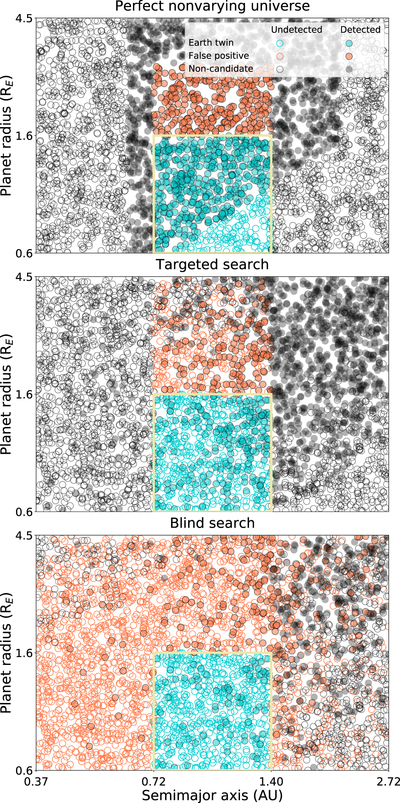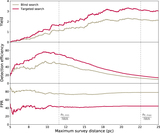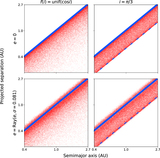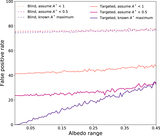Image Details

Caption: Figure 1.
Demographics of detected (filled) and undetected (hollow) planets for three simulated surveys. Blue denotes an Earth twin, while orange denotes a false positive, and gray denotes a planet that would not be mistaken for an Earth twin. Top panel: a survey of an ideal universe with every star at 10 pc, and planets with face-on inclination and 30% albedo. Middle panel: a search of a universe where stellar distance and orbital inclination vary randomly; albedo can uniformly vary from 0.05 to 0.5, and the planet is imaged at gibbous phase just outside the inner working angle. Bottom panel: a search of a universe where distance, inclination, albedo, and orbital phase are random. The grid cell defining Earth twins is highlighted in yellow. Planets are distributed log-uniformly in semimajor axis and radius. Based on a simulation with stellar number density inflated by ∼1.5 orders of magnitude to 5 × 103 stars, for visualization.
Copyright and Terms & Conditions
© 2018. The American Astronomical Society. All rights reserved.









